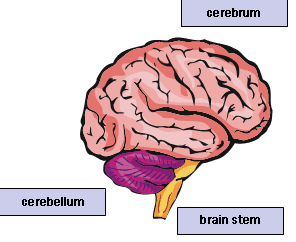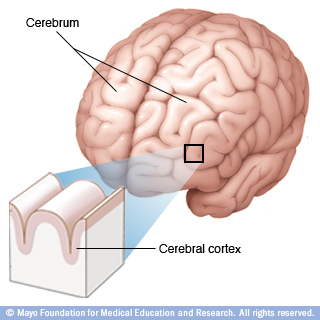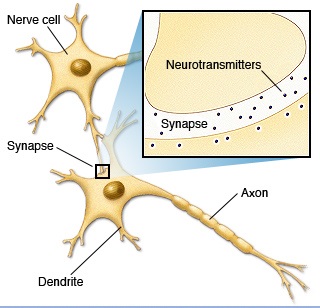How does the human brain process information? The human brain is perhaps the most complex of organs, boasting between 50-100 billion nerve cells or neurons that constantly interact with each other. These neurons ‘carry’ messages through electrochemical processes; meaning, chemicals in our body (charged sodium, potassium and chloride ions) move in and out of these cells and establish an electrical current. The nervous system is integral to the body, that is why when anything goes wrong, specialised doctors such as neurosurgeons like dr timothy steel are brought in to tackle the issue and administer the correct treatment for these problems.

Brain And Nerves:
- The nervous system is your body’s decision and communication centre.
- The central nervous system (CNS) is made up of the brain and the spinal cord and the peripheral nervous system (PNS) is made of nerves.

- Together they control every part of your daily life, from breathing and blinking to helping you memorize facts for a test.
- Nerves reach from your brain to your face, ears, eyes, nose, and spinal cord and from the spinal cord to the rest of your body.
- Sensory nerves gather information from the environment, send that info to the spinal cord, which then speeds the message to the brain.
- The brain then makes sense of that message and fires off a response.
Neurons:-
- Motor neurons deliver the instructions from the brain to the rest of your body.
- The spinal cord, made of a bundle of nerves running up and down the spine, is similar to a superhighway, speeding messages to and from the brain at every second.
- The brain is the most complex part of the human body. This three-pound organ is the seat of intelligence, interpreter of the senses, initiator of body movement, and controller of behaviour.
- Lying in its bony shell and washed by protective fluid, the brain is the source of all the qualities that define our humanity. The brain is the crown jewel of the human body.
 The brain is like a committee of experts. All the parts of the brain work together, but each part has its own special properties. If one or more sections of the brain lack development or simply fail to perform due to any reason, be it stress, fatigue or anxiety issues, it can lead to cognitive disturbances which can make daily life difficult. Consequently, people with stressful or tiring schedules might even take nootropics or similar natural supplements in order to smoothen out their cognitive functions and ensure that they can be productive despite external pressure. Coming back to the structure – the brain can be divided into three basic units: the forebrain, the midbrain, and the hindbrain.
The brain is like a committee of experts. All the parts of the brain work together, but each part has its own special properties. If one or more sections of the brain lack development or simply fail to perform due to any reason, be it stress, fatigue or anxiety issues, it can lead to cognitive disturbances which can make daily life difficult. Consequently, people with stressful or tiring schedules might even take nootropics or similar natural supplements in order to smoothen out their cognitive functions and ensure that they can be productive despite external pressure. Coming back to the structure – the brain can be divided into three basic units: the forebrain, the midbrain, and the hindbrain.
- The hindbrain includes the upper part of the spinal cord, the brain stem, and a wrinkled ball of tissue called the cerebellum.
- The forebrain is the largest and most highly developed part of the human brain: it consists primarily of the cerebrum.
Your brain contains billions of nerve cells arranged in patterns that coordinate thought, emotion, behavior, movement and sensation. A complicated highway system of nerves connects your brain to the rest of your body, so communication can occur in split seconds. Think about how fast you pull your hand back from a hot stove. While all the parts of your brain work together, each part is responsible for a specific function – controlling everything from your heart rate to your mood.
The cerebrum is the largest part of your brain. It’s what you probably visualize when you think of brains in general. The outermost layer of the cerebrum is the cerebral cortex, the “grey matter” of the brain. Deep folds and wrinkles in the brain increase the surface area of the grey matter, so more information can be processed.
The cerebrum is divided into two halves (hemispheres) by a deep fissure. The hemispheres communicate with each other through a thick tract of nerves, called the corpus callosum, at the base of the fissure. In fact, messages to and from one side of the body are usually handled by the opposite side of the brain.
Your brain’s hemispheres are divided into four lobes:-
- The frontal lobes control thinking, planning, organizing, problem-solving, short-term memory and movement.
- The parietal lobes interpret sensory information, such as taste, temperature and touch.
- The occipital lobes process images from your eyes and link that information with images stored in memory.
- The temporal lobes process information from your senses of smell, taste and sound. They also play a role in memory storage.
 The cerebellum is a wrinkled ball of tissue below and behind the rest of your brain. It works to combine sensory information from the eyes, ears and muscles to help coordinate movement.
The cerebellum is a wrinkled ball of tissue below and behind the rest of your brain. It works to combine sensory information from the eyes, ears and muscles to help coordinate movement.
The brainstem links the brain to the spinal cord. It controls many functions vital to life, such as heart rate, blood pressure and breathing. This area is also important for sleep. Structures deep within the brain control emotions and memories. Known as the limbic system, these structures come in pairs. Each part of this system is duplicated in the opposite half of the brain.
The thalamus acts as a gatekeeper for messages passed between the spinal cord and the cerebral hemispheres. The hypothalamus controls emotions. It also regulates your body’s temperature and controls crucial urges – such as eating or sleeping. The hippocampus sends memories to be stored in appropriate sections of the cerebrum and then recalls them when necessary.
The peripheral nervous system is all the nerves in your body, aside from the ones in your brain and spinal cord. It acts as a communication relay between your brain and your extremities. For example, if you touch a hot stove, the pain signals travel from your finger to your brain in a split second. In just as short a time, your brain tells the muscles in your arm and hand to snatch your finger off the hot stove.
 Nerve Cells:-
Nerve Cells:-
- Nerve cells (neurons) have two main types of branches coming off their cell bodies. Dendrites receive incoming messages from other nerve cells.
- Axons carry outgoing signals from the cell body to other cells – such as a nearby neuron or muscle cell. Interconnected with each other, neurons are able to provide efficient, lightning-fast communication.
- A nerve cell (neuron) communicates with other cells through electrical impulses when the nerve cell is stimulated.
- Within a neuron, the impulse moves to the tip of an axon and causes the release of neurotransmitters, chemicals that act as messengers.
Neurotransmitters pass through the synapse, the gap between two nerve cells, and attach to receptors on the receiving cell. This process repeats from neuron to neuron, as the impulse travels to its destination – a web of communication that allows you to move, think, feel and communicate.
Size of the Brain:-
- In terms of weight, the average adult human brain weighs in at 1300 to 1400 grams or around 3 pounds.
- In terms of length, the average brain is around 15 centimetres long.
- For comparison, a newborn human baby’s brain weighs approximately 350 to 400 grams or three-quarters of a pound.
- The human brain is protected by the skull (cranium), a protective casing made up of 22 bones that are joined together.
Facts about Brain:
- The typical brain is about 2% of a body’s weight but uses 20% of its total energy and oxygen intake.
- Your brain is 73% water.
- It takes only 2% dehydration to affect your attention, memory and other cognitive skills.
- Ninety minutes of sweating can temporarily shrink the brain as much as one year of ageing.
- Twenty-five percent of the body’s cholesterol resides within the brain.
- Cholesterol is an integral part of every brain cell. Without adequate cholesterol, brain cells die.
- All brain cells are not alike. There are as many as 10,000 specific types of neurons in the brain.
- Only 5 minutes without oxygen can cause brain damage. Brain information moves anywhere between 1 mph and an impressive 268 miles per hour.
- This is faster than Formula 1 race cars which top out at 240 mph.
- Your brain generates about 12-25 watts of electricity. This is enough to power a low wattage LED light.
- The average brain is believed to generate around 50,000 thoughts per day.
- Disturbingly, it’s estimated that in most people 70% of these thoughts are negative. Albert Einstein’s brain weighed 2.71 pounds (1,230 grams) – 10% smaller than the average of 3 pounds (1,400 grams).
- However, the neuron density of his brain was greater than average.

















